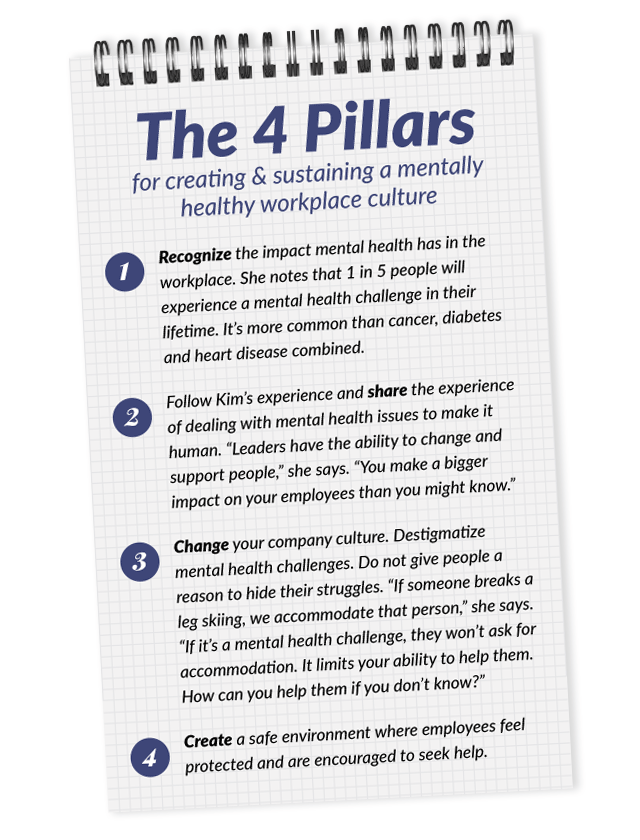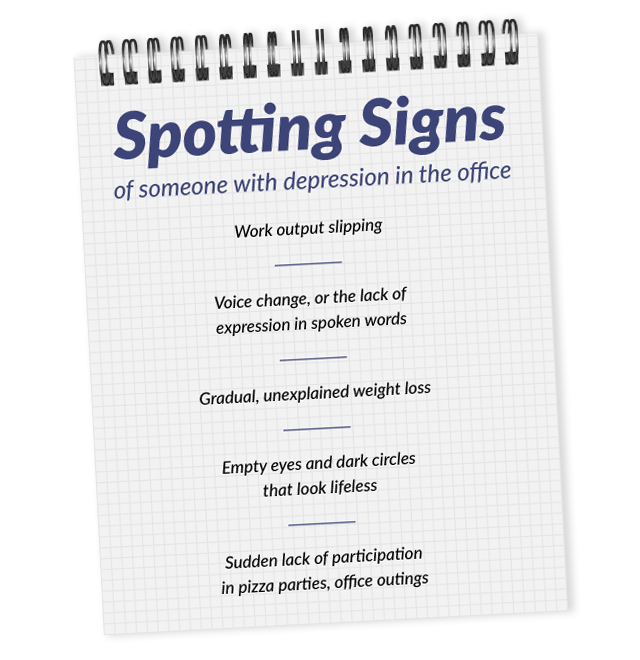Advice for Improving Mental Health in the Workplace
Mental health is rarely discussed in the office, and for someone suffering among their co-workers, it can be a very lonely and isolating experience.
Jul 08, 2022
Written by our Founder and CEO, our Celebrations Pulse Sunday Letters aim to engage with our community. From sharing stories to welcoming your ideas, we want to help you to express, connect, and celebrate the important people in your life.
In May, we wrote about how mental health issues have negatively affected the social and emotional well-being of many in our community in recent years. Several factors, ranging from the pandemic to political and economic uncertainty, seem to have unleashed an epidemic of loneliness, depression, and anxiety.
Truth be told, many of those issues were hiding in plain sight long before COVID. The pandemic and all that followed have amplified the issues and brought them to the forefront. Everyone, including ourselves, are now more aware of mental health issues.
In our May letter, we shared advice from our Connectivity Council, including tips for conducting a mental “checkup” to help identify potential issues. In this update, we’re taking a look at mental health issues in the workplace and the role we all can play to help our colleagues who may be suffering.
Sharing forward: Our journey of discovery
John Broderick, former chief justice of the New Hampshire Supreme Court and a friend of Jim’s, recently appeared on the Celebrations Chatter podcast to share his family’s struggle with mental health challenges and the work he is doing to bring awareness of the issue to the legal community and other workplaces.
John introduced Jim to Kim LaMontagne, who shared her personal story of struggle with alcohol, depression, anxiety, and suicidal thoughts. She’s now turning her life lessons into an opportunity to help companies by making their leaders aware and sensitive to these issues. And she’s not just offering training but also providing the tools that empower managers to intercede and effect change.
Kim is teaching leaders to use their power. We invited her to speak to our team, and everyone found her story to be eye-opening. It’s already resulted in changes in how we think about mental health in the office. We thought our larger community would also benefit from her story and advice.

Kim's story: Suffering in silence
Kim’s story begins in the early 2000s, when she was a top-performing sales manager at a large national company. Kim had a secret that nobody suspected because of her high performance: She was depressed, anxious, and suicidal but still hit her “numbers.” To mask her pain, she misused alcohol.
After several close calls, she quit drinking and has been sober since July 16, 2009 (13 years). But that did not remove the other mental health challenges in her life. For years, she feared speaking openly about her mental health because she believed it would lead to judgment and jeopardize her seat at the corporate table.
The turning point came in 2016, when her leader sensed something was awry despite Kim’s excellent performance on the job. The two met one day, and Kim finally told her manager the truth. “I decided that day to take off my mask and tell her about the alcohol misuse, the suicidal thoughts, the depression, the anxiety, the everything,” Kim says. “I laid it all out.”
Kim’s manager did all the right things: She noticed. She listened. And she encouraged Kim to find the resources to help her. It’s a lesson that all managers need to learn.
We couldn’t agree more, and it’s one of the reasons we created Fresh University at 1-800-Flowers.com. It’s an opportunity for our leadership and employees to continue learning throughout their lives. Kim’s lessons about mental health awareness and empowerment were part of the Health & Wellbeing curriculum.
Advice for encouraging mental health in the workplace
Mental health can be so personal that we often don’t know that some of our co-workers and office mates might be suffering silently with their own issues. It can be excruciatingly difficult for people who are dealing with severe depression and anxiety issues to show up at the office each day and try and pretend that everything is fine.
There are two determinants when dealing with someone at the office who is in pain. The first is that because mental illness still has a stigma to it, many who are sick remain quiet out of fear. And if someone in the office is visibly depressed, the second deterrent is that most co-workers, managers, and supervisors, don’t know how to handle the situation.
Kim has identified four pillars for creating and sustaining a mentally healthy workplace culture:

If you’d like to learn more, join both Kim and John as they present a free webinar on creating a mentally healthy workplace.
Community spotlight
A member of our community reached out following our May letter on mental health. “Tom” shared his experience with severe depression at work, how he was reluctant to talk about it, and how his cohorts didn’t know what to do with him. At the height of his career as an executive with a public relations firm, disaster struck. He described what happened:
“My descent to severe depression was drawn out over six months, but I had the tell-tale signs of falling behind in my work, weight loss, and a gradual changing of my voice. At the time, I didn’t know that these were indicators of depression, and neither did my colleagues. At one point, it all became too much, and I went into the supply closet and just started to cry uncontrollably.”
Revelation of a diagnosis
Tom was then diagnosed by his doctor with severe depression and anxiety and was sent to a psychiatrist and therapist to begin treatment. “I was so surprised I had a mental illness. The first thing that the doctors did was put me on disability, and after six weeks of treatment, I was feeling better and wanted to go back to work, which was a big mistake on my part.”
“When you return to an office after an extended time off, there are usually balloons, cake and a celebration. That did not happen to me. I didn’t tell anyone what was wrong, and when I returned, I had my accounts taken away from me by the CEO. I was left with nothing to do for eight hours. Each agonizing day, I sat alone at my desk as the office buzzed around me. I eventually went back on disability since the experience of returning to the office was so traumatizing.”
Educating employees about mental illness is critical
Tom doesn’t necessarily fault his co-workers because they, like most people, didn’t know how to react to someone with mental illness. “I was learning about it myself through my own experience, so I know that everyone else around me was mystified about how to help.” Tom survived and is back enjoying his current job and profession. As a result of his experience, he shared some advice about how to spot signs of someone with depression in the office.

We all have our own power to think about the people in our workplaces who might be suffering and check on them by reaching out to make sure they are OK. Use Your Power. You can make a difference in helping someone to know that they are not alone, and that includes your co-workers in the office.
All the best,
Chris & Jim








